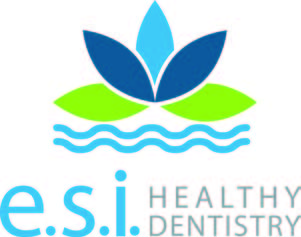The thought of going to the dentist conjures up feelings of gloom and doom. While there are those conscientious individuals who faithfully visit their family dentist twice annually as recommended by professional dental associations, there are those who wait until the absolute last possible moment—when the toothache is totally unbearable—to pick up the phone and declare an emergency. And then there are those who have never set foot in the dreaded facility.
Whether you fall into the category of the faithful dentist goers or the infrequent-to- never visitor, there may come a time when you need to address a dental issue and knowledge of what is available can determine the type of treatment you receive and how it may affect you in the long run. Did you even know there are alternatives to traditional dentistry?
In my humble opinion the goal of modern, comprehensive oral health care is to change the lives of patients by turning their sad smiles into stories of success. We do this through an innovative and unique approach called biomimetic dentistry.
Biomimetic dentistry improves upon traditional dentistry in that it embraces the goal of restoration through conservative treatment options. These options “mimic” the properties of natural teeth and strive to preserve pulp vitality which restores structural integrity to the oral cavity. Biomimetic dentistry minimizes excessive preparation for crowns and reduces the need for root canals. It gives hope for badly damaged teeth that may be deemed “un-restorable”. When we combine a number of skills and techniques from Eastern medicine (i.e. Traditional Chinese Medicine), Western medicine (technologically advanced medicine), biology, technology and psychology, we create a favorable healing environment for patients. Think of it as a 3-step life-changing protocol.
The first order of business usually tackles pathophobia (the fear of suffering and disease), which can be a great hindrance to the healing and restoration process. This phase of treatment may include laser, dental sedation, and/or essential oils to comfort the patient and bring about a soothing, relaxing atmosphere, which is paramount to effective dentistry.
After breaking up any prevalent anxiety, the doctor is able to implement sound dental protocols, which may include such modalities as sinus augmentation, grafting, guided surgery or computer generated restorations to continue the healing and restoration process. Finally, after physical treatment is completed, the patient enters the final phase of care, which entails establishing a holistic protocol including biological techniques (such as nutritional supplements, diet, and probiotics) to ensure wellness.
Effective dental care entails more than “drilling and filling”, but encompasses a comprehensive program that addresses the health and well-being of the entire body. After all, good oral health and general wellness go hand in hand. The mouth, being the first step in the digestive process, can open the door to inflammation, illness and disease if not properly maintained. Good oral health does more than prevent bad breath or tooth decay or gum disease. It also helps prevent a host of other ailments such as endocarditis (an infection of the inner lining of the heart), cardiovascular disease, stroke and low weight preterm births. It is also pertinent in the prevention and control of diabetes.
Jimmy Kilimitzoglou, DDS, FACD, FPFA, DABOI, MAGD, FAAID, FICOI
ESI Healthy Dentistry
42 Terry Road, Smithtown, NY 11787
Tel (631) 979 7991 / Fax (631) 979 7992
dental@esihealthydentistry.com
www.esihealthydentistry.com
– A D V E R T O R I A L –




















